Mallard, Wilde Eend, Stockente, Pato-real, Anade Real
Spotted in the Alentejo region of Portugal. Mallard sound
The Mallard or Wild Duck (Anas platyrhynchos) is a dabbling duck which breeds throughout the temperate and subtropical Americas, Europe, Asia, and North Africa, and has been introduced to New Zealand and Australia. This duck belongs to the subfamily Anatinae of the waterfowl family Anatidae.
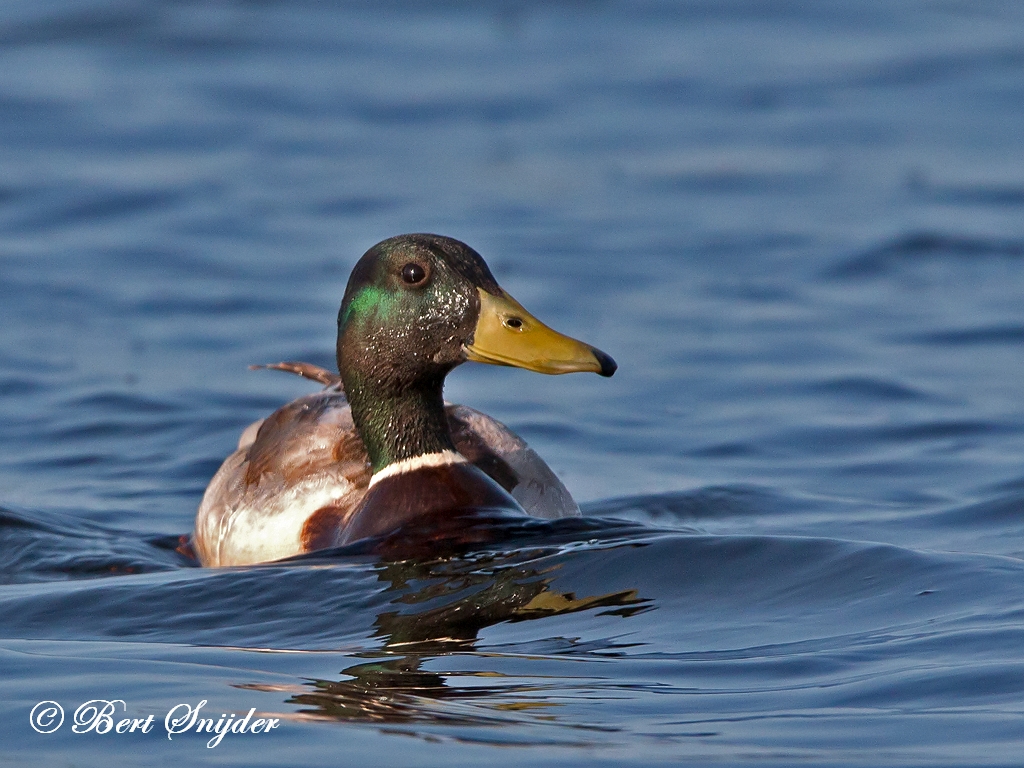
More photos at the bottom of this page:
The male birds (drakes) have a glossy green head and are grey on wings and belly, while the females have mainly brown-speckled plumage. Mallards live in wetlands, eat water plants and small animals, and are gregarious. This species is the ancestor of most breeds of domestic ducks.
The Mallard is a medium-sized waterfowl species although is often slightly heavier than most other dabbling ducks. It is 50–65 cm (20–26 in) long (of which the body makes up around two-thirds), has a wingspan of 81–98 cm (32–39 in), and weighs 0.72–1.58 kg (1.6–3.5 lb). Among standard measurements, the wing chord is 25.7 to 30.6 cm (10.1 to 12.0 in), the bill is 4.4 to 6.1 cm (1.7 to 2.4 in) and the tarsus is 4.1 to 4.8 cm (1.6 to 1.9 in). The breeding male Mallard is unmistakable, with a glossy bottle-green head and white collar which demarcates the head from the purple-tinged brown breast, grey brown wings, and a pale grey belly. The rear of the male is black, with the dark tail having white borders.
The bill of the male is a yellowish orange tipped with black while that of the female is generally darker ranging from black to mottled orange. The female Mallard is predominantly mottled with each individual feather showing sharp contrast from buff to very dark brown, a coloration shared by most female dabbling ducks, and has buff cheeks, eyebrow, throat and neck with a darker crown and eye-stripe.
Both male and female Mallards have distinct iridescent purple blue speculum feathers edged with white, prominent in flight or at rest, though temporarily shed during the annual summer moult. Upon hatching, the plumage colouring of the duckling is yellow on the underside and face (with streaks by the eyes) and black on the backside (with some yellow spots) all the way to the top and back of the head. Its legs and bill are also black. As it nears a month in age, the duckling’s plumage will start becoming drab, looking more like the female (though its plumage is more streaked) and its legs will lose their dark grey colouring.
Two months after hatching, the fledgling period has ended and the duckling is now a juvenile. Between three to four months of age, the juvenile can finally begin flying as its wings are fully developed for flight (which can be confirmed by the sight of purple speculum feathers). Its bill will soon lose its dark grey colouring and its sex can finally be distinguished by three factors. The bill colouring is yellow in males, black and orange for females. The breast feathers are reddish-brown for males, brown for females. The centre tail feather is curled for males (called a drake feather), straight for females.[citation needed]
During the final period of maturity leading up to adulthood (6–10 months of age), the plumage of female juveniles remains the same while the plumage of male juveniles slowly changes to its characteristic colours.[citation needed] This plumage change also applies to adult Mallard males when they transition in and out of their non-breeding eclipse plumage at the beginning and the end of the summer moulting period. The adulthood age for Mallards is 14 months and the average life expectancy is 3 years.
Several species of duck have brown-plumaged females which can be confused with the female Mallard. The female Gadwall (A. strepera) has an orange-lined bill, white belly, black and white speculum which is seen as a white square on the wings in flight, and is a smaller bird. More similar to the female Mallard in North America are the American Black Duck (A. rubripes), which is notably darker hued in both sexes than the Mallard, and the Mottled Duck (A. fulvigula), which is somewhat darker than the female Mallard, with no white edge on the speculum and slightly different bare-part colouration.
In captivity, domestic ducks come in wild-type plumages, white, and other colours. Most of these colour variants are also known in domestic Mallards not bred as livestock, but kept as pets, aviary birds, etc., where they are rare but increasing in availability.
A noisy species, the male has a nasal call, and a high-pitched whistle, while the female has a deeper quack stereotypically associated with ducks.

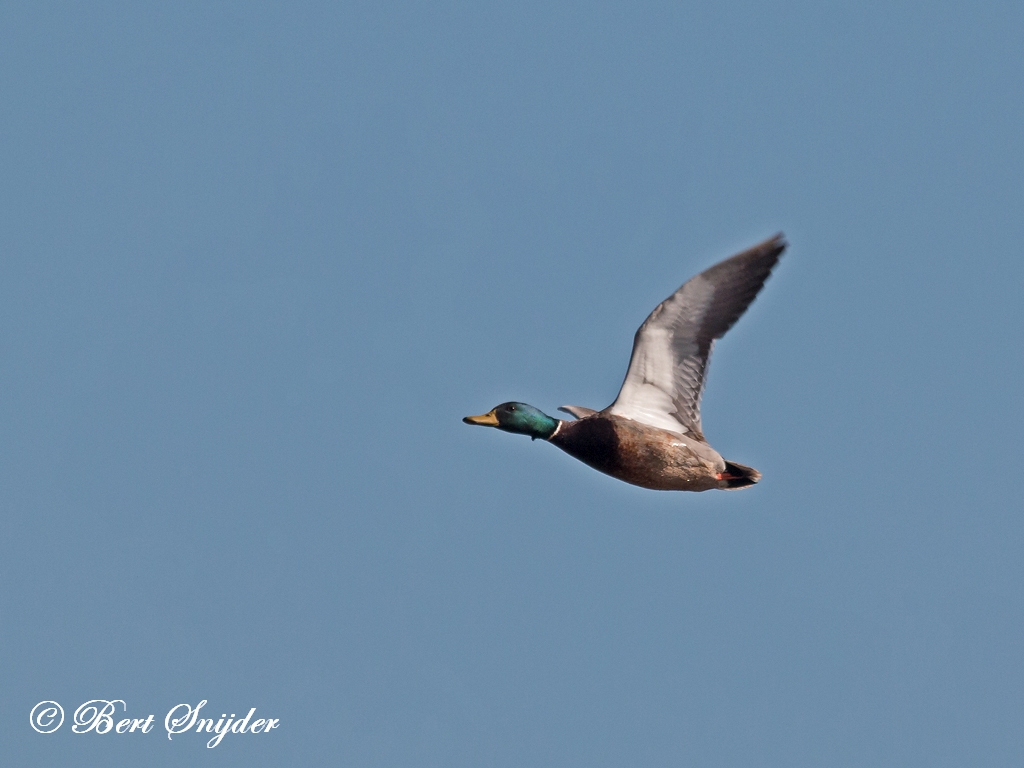


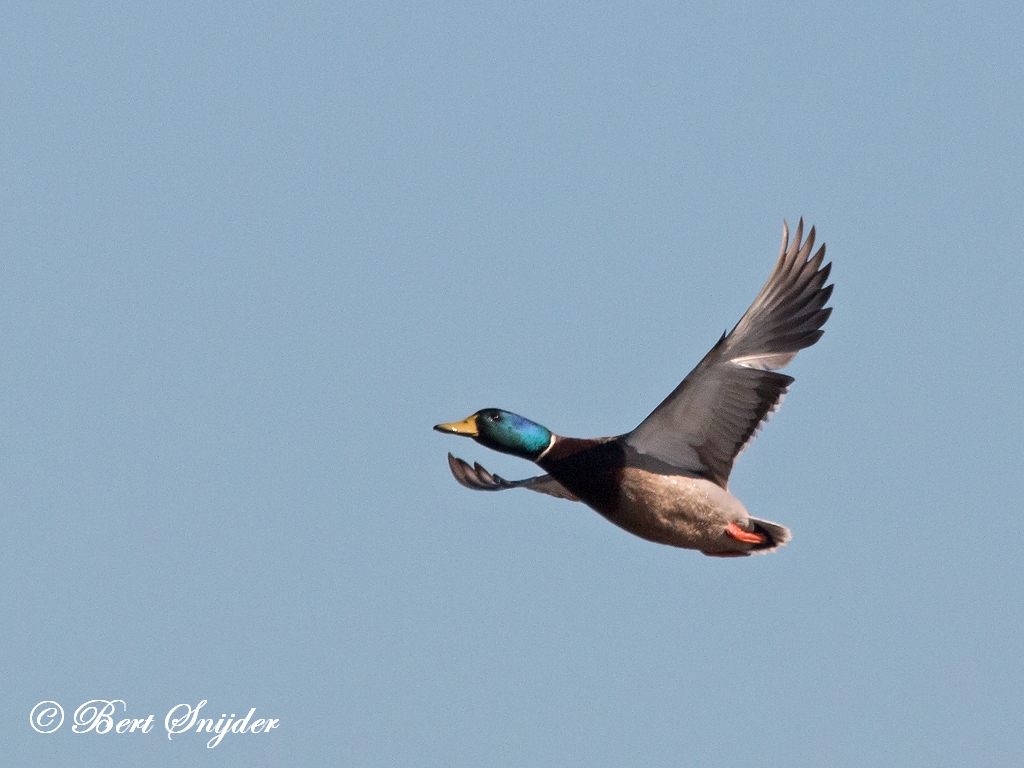

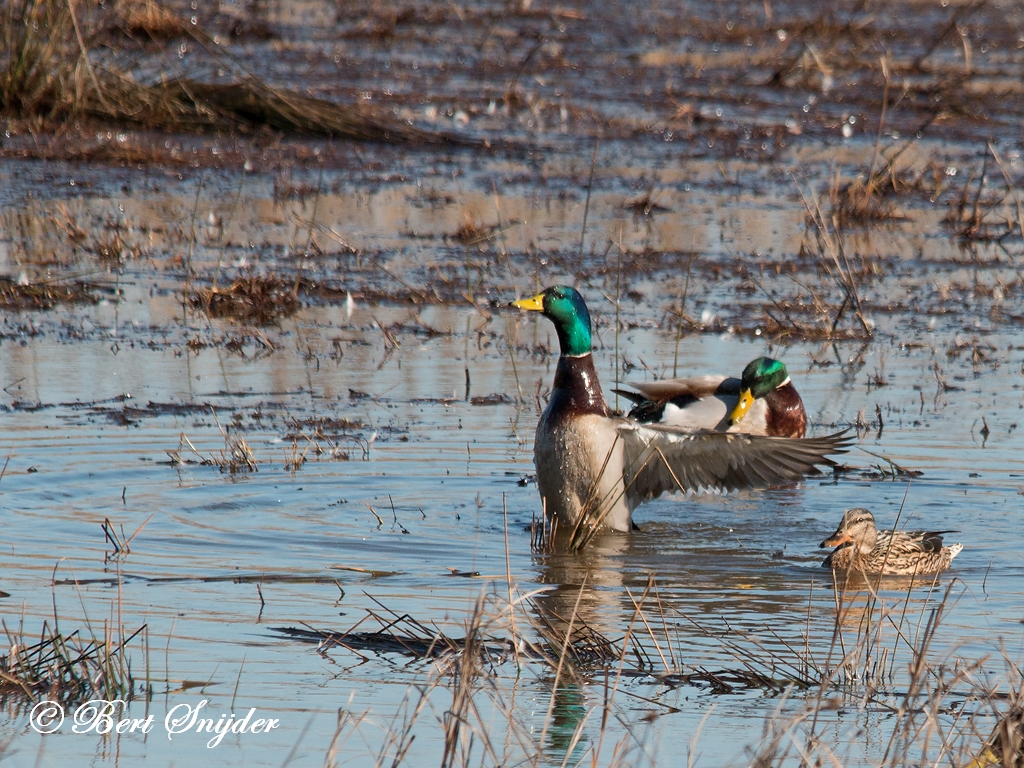
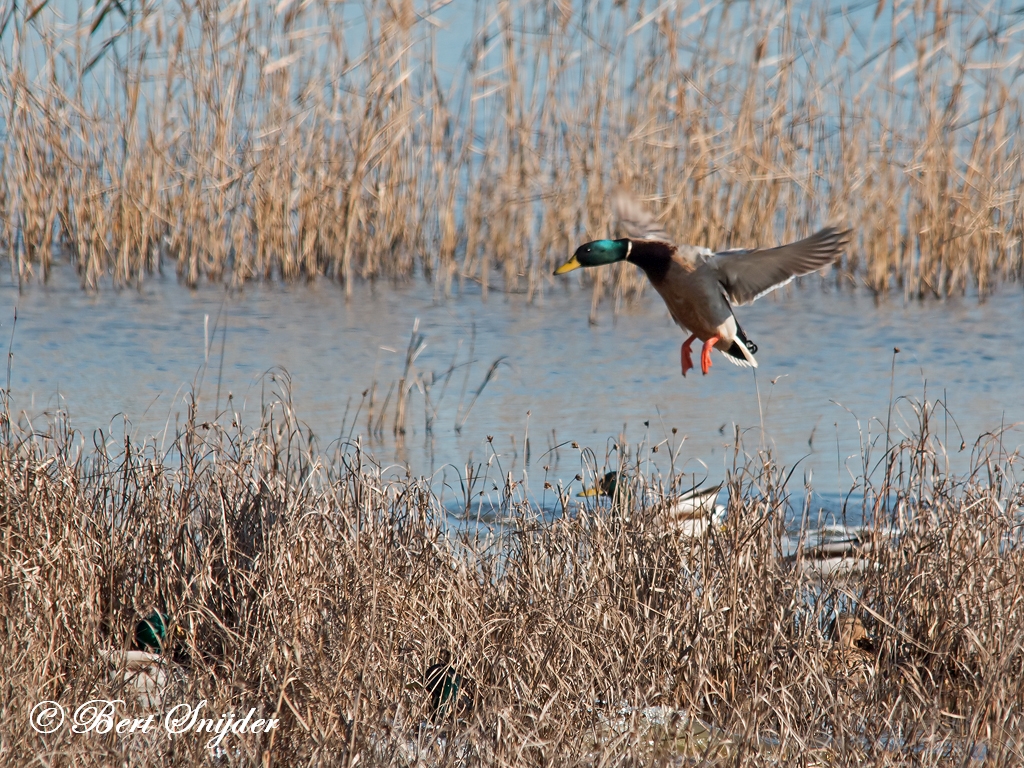

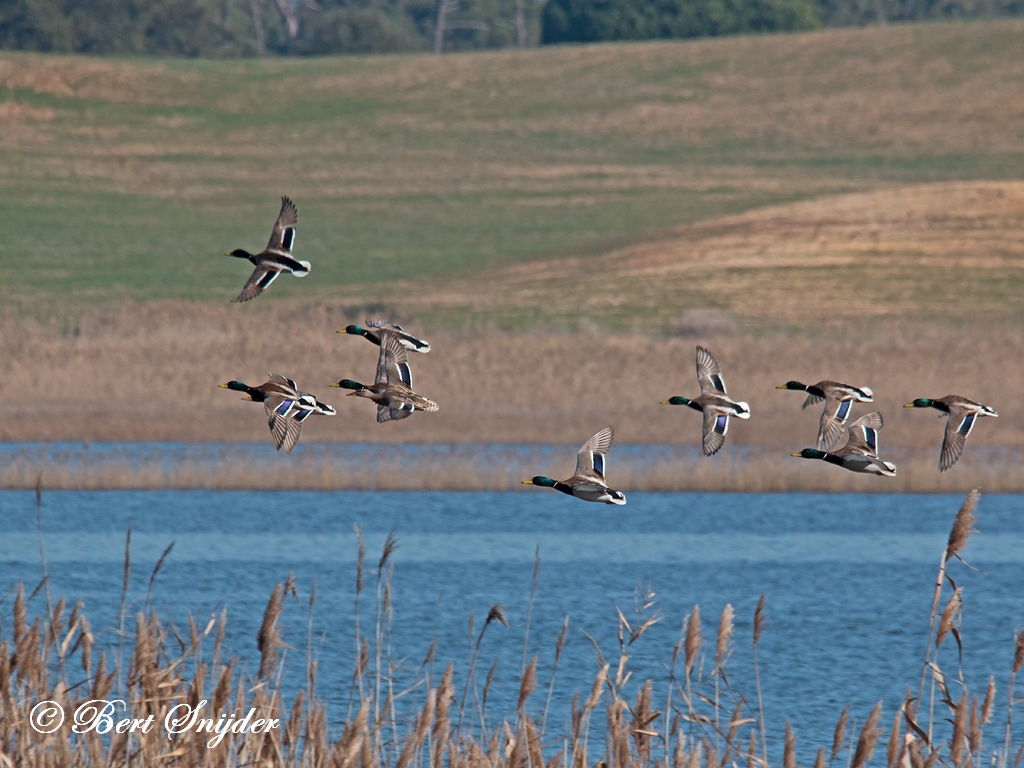
Other synonyms:
Afrikaans: Groenkopeend, Mallard
Asturian: Coríu Rial
Belarusian: kryžanka
Bulgarian: diva patica, zelenoglavka
Breton: An houad-korz, Houad, houad-korz
Catalan: Ànec collverd, ànec coll-verd, Ànec domèstic, Collverd, Coll-verd
Catalan (Balears): Collverd
Valencian: Coll-verd
Czech: kachna divoká
Welsh: Cors hwyad, Corshwyaden, Garan hwyad, hwyaden wyllt
Danish: Gråand
German: Stockente
English: Common Mallard, Green-headed Mallard, Greenland Mallard, Mallard, Mallard (Northern), Mallard Duck, Mexican Duck, Northern Mallard
Esperanto: platbeka anaso
Spanish: Anade Azulon, Anade Azulón, Ánade Azulón, Anade real, ánade real, Pato Cabeciverde, pato de collar, Pato Inglés, Pato Real
Spanish (Colombia): Pato Real
Spanish (Costa Rica): Pato Cabeciverde
Spanish (Cuba): Pato Inglés
Spanish (Dominican Rep.): Pato Inglés
Spanish (Honduras): Pato de collar
Spanish (Mexico): Pato de Collar
Spanish (Nicaragua): Pato Cabeciverde
Estonian: sinikael part, Sinikael-part
Basque: Ànec collverd, Basahate, etxe-ahate
Finnish: Heinä- eli sinisorsa, Sinisorsa
Faroese: Stokkont, Stokk-ont, villdunna
French: Canard colvert, Canard malard
Friulian: masurin, mazar, mazorin, raze grande
Frisian: wylde ein
Irish: alavanco real, Lacha Fhiáin, mallard, pato real
Gaelic: Lach, Lacha Chinn Naine, Tunnag Fhiadhaich
Galician: Alavanco real, Ànec collverd, Lavanco, Pato real
Manx: Laagh Voirrey, laagh voirrey , Thunnag Feie
Haitian Creole French: Kanna kolvèt
Croatian: Divlja Patka
Hungarian: Tõkés réce, t?kés réce
Icelandic: stokkönd
Italian: germano reale
Inuktitut: Qeerlutooq
Japanese: Ao-kubi, Hon-gamo, magamo, Ma-gamo
Cornish: Hos gwyls, mallart
Latin: Anas platyrhynchos, Anas platyrhynchos platyrhynchos, Anas platyrhynchos platyrhynchos/conboschas
Ladino: anera salvaria
Ladin: Anera salvaria
Lithuanian: Didžioji antis
Latvian: mercene
Macedonian: diva patka
Maltese: kuluvert
Dutch: Wilde Eend
Norwegian: Blåhals, Grasand, stokkand
Portuguese: pato real, Pato-real
Romansh: anda selvadia
Romanian: Divlio-ratsa, Divlio-ratsoy, divlio-ratsoy divlio-ratsa, rata mare, ra?? mare
Romany: Divlio-ratsoy
Sardinian: anadi conca birdi, anadre conchi ‘irde, birdasulu, birdi allanau, conchirde, nadre agreste, palidone, testirde
Scots: Lach, lacha, Lacha chinn naine, Tounag
Northern Sami: duoršu, Suoidnesuorsi
Slovak: ka?ica divá
Slovenian: divja raca, mlakarica, raca mlakarica
Albanian: rosa e vëndit
Serbian: Divlja patka, divlja patka gluvara, Divlja patka, gluvara, gluvara, patka gluvara
Swedish: Gräsand
Travel Birdwatching Holiday Alentejo, Vacation Portugal for birders to see birds on your trip.